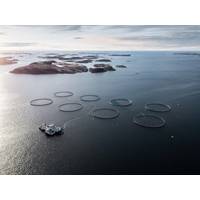
Cod Farmer Norcod Opens New Site in Nordland County
not only to the industrial base of the coastal municipalities in which we are active, but also to support employment opportunities and ensure sustainable operations with minimal impact to the environment,” Riber said.Including Labukta, Norcod now has a total of five cod-farming sites along the Norwegian coast encompassing 19 licenses with MAB of 13,920mt in total. The company recently finalized its first full production cycle and is set to begin harvesting its second cycle in the third quarter of this year. It is also in the process of putting its third cycle of cod into the sea phase this summer
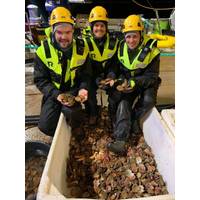
Tau Tech Raises $34.4m for Sustainable Seabed-Harvesting Tech
controversial for the potential damages if can cause to the ocean ecosystem, including the release of large amounts of naturally stored carbon from the seafloor. Norway is one of the few countries that prohibits this method to protect seabed fauna. As a result, valuable seafood resources along the Norwegian coast have remained inaccessible for 30 years. Together with Norwegian independent research institute SINTEF, Tau Tech has developed a seabed-friendly harvesting method. In cooperation with the Institute of Marine Research, the Directorate of Fisheries and other leading marine experts, the company
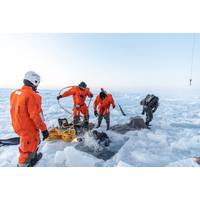
The Value of Friends in “High-Latitude” Places
, in total darkness, under 100-percent ice cover, thousands of meters at the bottom of the sea? In the case of the U.S. Office of Naval Research (ONR), you call your friends in Norway. That is exactly what the Chief of Naval Research Rear Admiral Lorin C. Selby did when he enlisted the help of the Norwegian Coast Guard icebreaker and offshore patrol vessel, the CGV Svalbard, to retrieve oceanographic moorings containing irreplaceable data. The work supported the Coordinated Arctic Acoustic Thermometry Experiment (CAATEX), an important international experiment to measure changes in the Arctic environment

Equinor, Moss Maritime Testing Floating Solar in Rough Waters
tested for a minimum of one year. The project is a collaboration between Equinor and the technology company Moss Maritime. "The purpose of the pilot plant is not primarily to see how much energy it can produce, but how the weather conditions affect the plant," Equinor said."The Norwegian coast and continental shelf are world-class when it comes to oil, gas and wind, but when it comes to sun, other regions offer better conditions. As a test area, Frøya is still very suitable," the company added.
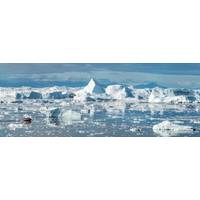
Climate Change is Flooding the Arctic with Light – and New Species
chance for taking hold in Arctic Canada.© shorex.koss / Adobe StockAmong these is the cold-adapted red king crab, native to the Sea of Japan, Bering Sea and North Pacific. It was intentionally introduced to the Barents Sea in the 1960s to establish a fishery and is now spreading south along the Norwegian coast and in the White Sea. It is a large, voracious predator implicated in substantial declines of harvested shellfish, sea urchins and other larger, slow moving bottom species, with a high likelihood of surviving transport in ballast water.Another is the common periwinkle, which ruthlessly grazes
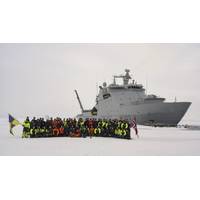
ABB Propulsion Takes Ship to North Pole
Norwegian Coast Guard ship KV Svalbard is the first vessel powered by an ABB Azipod propulsion system to reach the North Pole.The ship is equipped with twin 5MW Azipod icebreaking units which enabled it to sail through polar ice at speeds of up to 6 to 7 knots when it took part in an international scientific expedition, the Coordinated Arctic Acoustic Thermometry Experiment led by Norwegian research foundation The Nansen Center.The Azipod electric propulsion system is designed to make s ships highly maneuverable, being based on an electric drive motor located under the ship’s hull in a submerged

Lifeboat Converted Into Unsinkable Solar-Powered Arctic Excursion Boat
the Norwegian Artic while offering its occupants all the comforts of home.“We wanted to experience a range of different cultures, different approaches to living by the sea, different landscapes, different climates. And if you are creating an expedition boat that will take you 3100 miles up the Norwegian coast, your concerns include a bit more of the finer things in life,” they stated.The ideas that the architect applied throughout the project were informed by their experience in designing buildings, their objective being to capture the views and bring the outside in while at the same time keeping
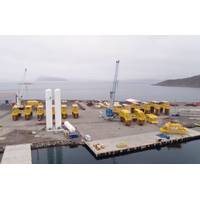
14 Template Installations in One Month
company said it now sees that standardization and simplification strengthens the competitiveness of the subsea industry, providing jobs both onshore and offshore. The Askeladd, Johan Castberg, Troll Phase 3 and Snorre Expansion Projects have created a high activity level in yards along the Norwegian coast. They are currently building the manifolds for the templates – and even more templates, Equinor said
Statoil Inks LOI for Johan Sverdrup Phase 2
platform. To date the Johan Sverdrup development has led to contracts worth more than NOK 60 billion ($7.7 billion). Of this, more than 70 percent have been awarded to suppliers in Norway. The two phase 2 contracts will lead to increased activity at several yards along the Norwegian coast – particularly in Haugesund, Egersund and Stord. Engineering activity will take place in Asker (Aibel) and Stavanger (Aker Solutions). At its peak, the Johan Sverdrup phase 2 development will directly employ more than 3,000 people in Norway. "Johan Sverdrup will create significant



 February 2024
February 2024





